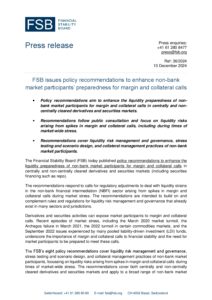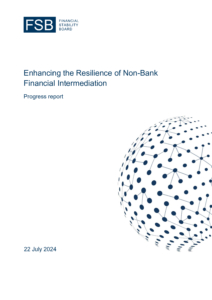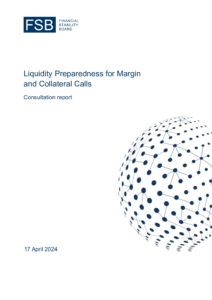Summary of document history
Whilst margin and collateral calls are a necessary protection against counterparty risk, they can also amplify the demand for liquidity by market participants if they are unexpected in times of stress and affect a large enough part of the market.
Recent episodes of market stress, including the March 2020 market turmoil, the Archegos failure in March 2021, the 2022 turmoil in certain commodities markets, and the September 2022 issues experienced by many pooled liability-driven investment funds, underscore the importance of margin and collateral calls to financial stability. During these episodes the sudden increases in margin and collateral requirements were sometimes significant in scale and frequency, stretching some market participants’ ability to manage the associated liquidity risks.
These events illustrate that whilst margin and collateral calls are a protection against counterparty risk, they can also amplify the demands for liquidity across markets and market participants if they are unexpected in times of stress and affect a large enough part of the market. The increase in margin and collateral calls can impact market participants differently depending on the size of their positions and level of liquidity preparedness. This highlights the need for market participants to be well prepared to meet these calls.
This report sets out steps to enhance the liquidity preparedness of non-bank market participants for margin and collateral calls in centrally and non-centrally cleared derivatives and securities markets. It forms part of the FSB’s work programme on NBFI.
FSB policy recommendations
Liquidity risk management practices and governance
Recommendation 2: Market participants should define their tolerance for liquidity risk arising from margin and collateral calls and establish contingency funding plans to ensure that liquidity needs arising from these calls can be met, including under extreme but plausible stressed conditions.
Recommendation 3: Market participants should regularly review and update their liquidity risk framework to ensure that liquidity risks arising from margin and collateral calls are robustly managed and mitigated, particularly under extreme but plausible stress scenarios.
Liquidity stress testing and scenario design
Recommendation 4: Market participants should conduct liquidity stress tests to identify sources of potential liquidity strains caused by margin and collateral calls, and to ensure a level of resilience consistent with their established liquidity risk tolerance. The stress test results should be used to calibrate adequate, diverse, and reliable sources of liquidity and collateral arrangements.
Recommendation 5: Robust stress testing should analyse a range of extreme but plausible liquidity stresses caused by changes in margin and collateral calls, as well as market participants’ overall liquidity position.
Collateral management practices
Recommendation 6: Market participants should have resilient and effective operational processes and collateral management practices.
Recommendation 7: Market participants should maintain sufficient levels of cash and readily available as well as diverse liquid assets and establish appropriate collateral arrangements to meet margin and collateral calls.
Recommendation 8: Market participants should have active, transparent, and regular interactions with their counterparties and third-party service providers in collateralised transactions to ensure adequate operational resilience with respect to spikes in margin and collateral calls under stressed conditions.


